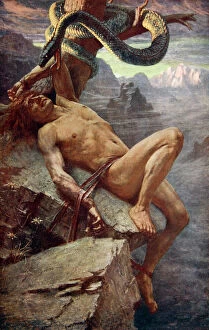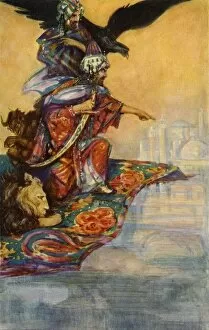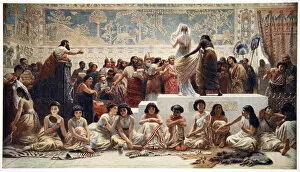Donald Alexander Mackenzie Collection
Donald Alexander Mackenzie was a renowned artist who brought ancient myths and legends to life through his captivating illustrations
For sale as Licensed Images
Choose your image, Select your licence and Download the media
Donald Alexander Mackenzie was a renowned artist who brought ancient myths and legends to life through his captivating illustrations. His works, such as "Punishment of Loke" and "Idun and the Apples, " beautifully depicted scenes from Norse mythology with intricate details that transported viewers into another world. In 1890, Mackenzie collaborated with James Doyle Penrose to create these mesmerizing pieces that showcased the punishment of the mischievous Loke and Idun's enchanting apples. Fast forward to 1912, Mackenzie teamed up with Ernest Charles Wallcousins for "Hundingsbanes Return to Valhal, " which portrayed a triumphant hero's homecoming in Valhalla. Continuing his exploration of Norse mythology, he reunited with Penrose in 1912 for "Freyja and the Necklace, " capturing Freyja's quest for her stolen necklace. Warwick Goble also joined forces with Mackenzie in 1913, creating masterpieces like "Sita Finds Rama Among Lotus Blooms" and "Arjuna and the River Nymph. " These illustrations vividly depicted moments from Hindu epics, showcasing Goble's exceptional talent alongside Mackenzie's vision. Additionally, they worked together on other notable pieces like "Damayanti Choosing A Husband" and "The Return of the Heroes Slain in Battle. " Lastly, their collaboration resulted in powerful portrayals such as "Shantanu Meets the Goddess Ganga" and "Rama Spurns the Demon Lover.













